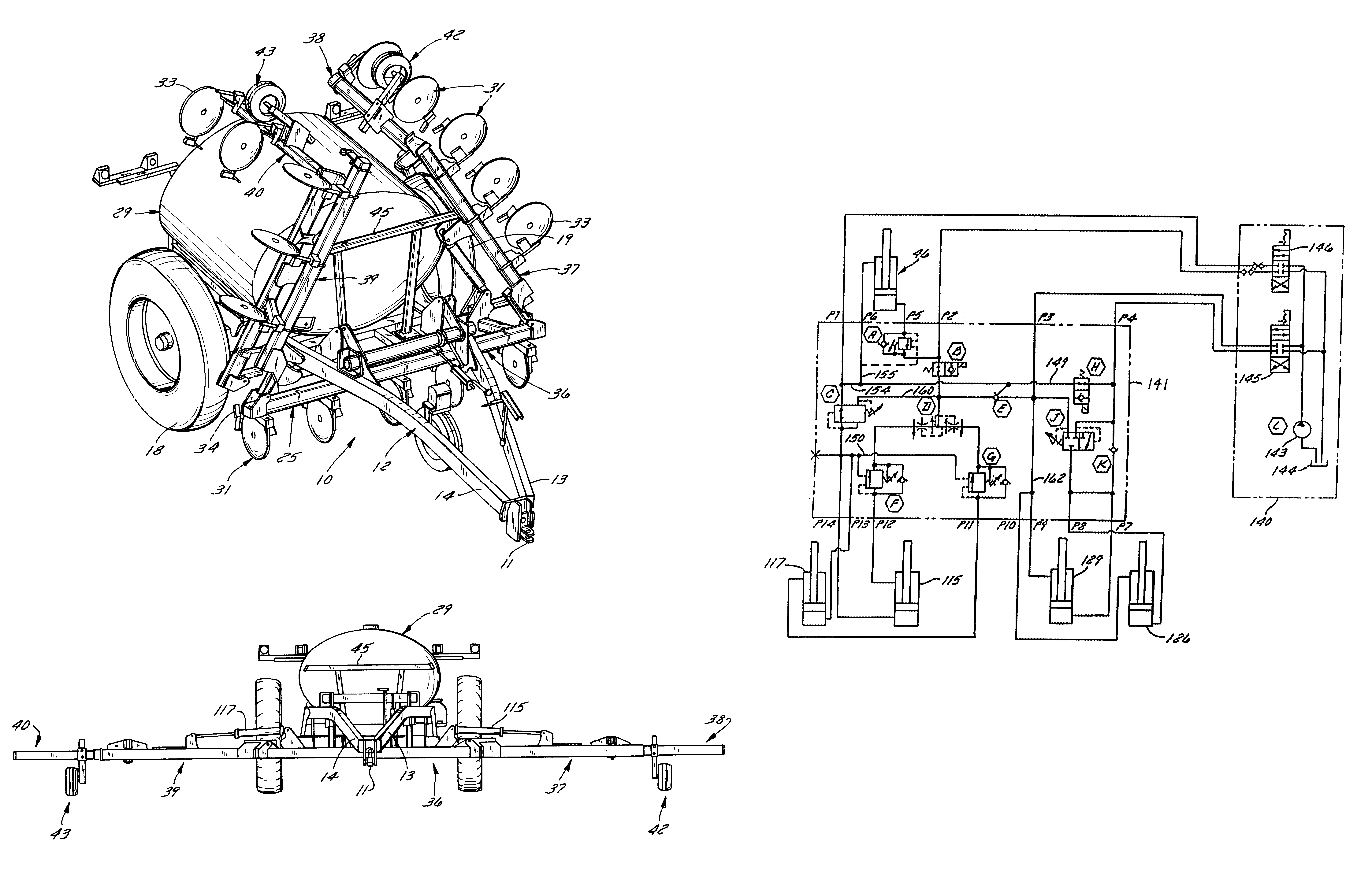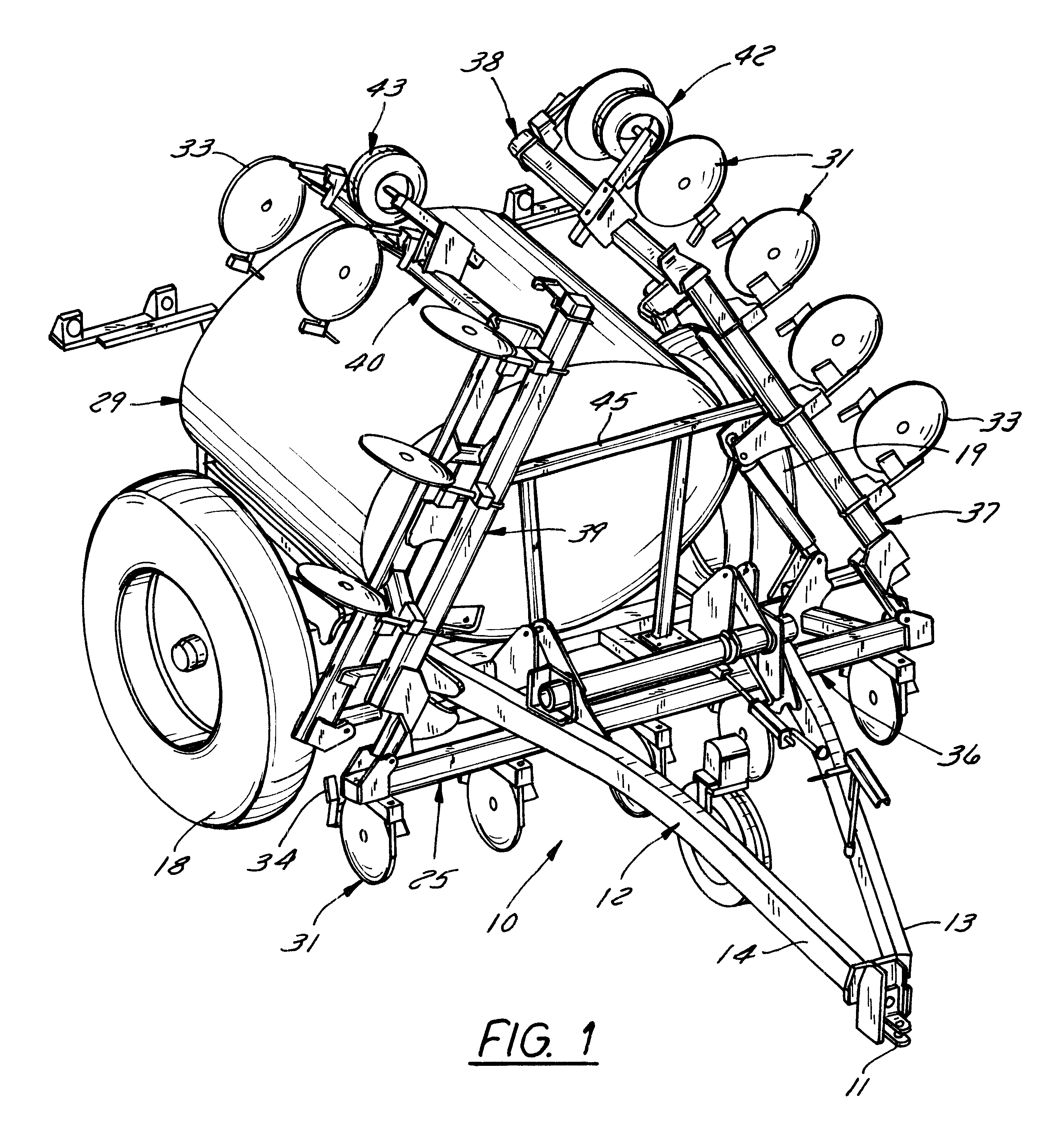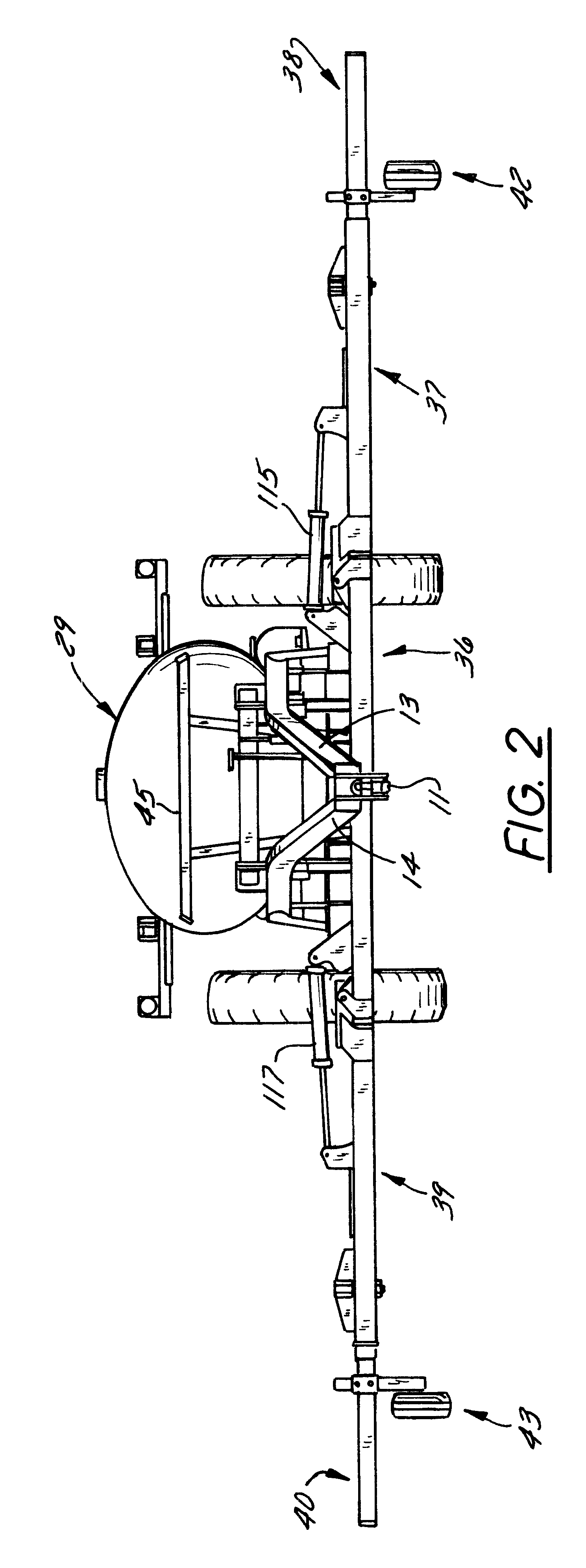Flexible toolbar and operating hydraulic circuit
a hydraulic circuit and flexible technology, applied in the direction of agricultural machinery, adjusting devices, agricultural tools and machines, etc., can solve the problems of affecting the desired universal adjustmentability, the inability or impracticality of mounting the inability to mount the applicator units to the toolbar frame, etc., to enhance the safety of the implement, and reduce the overall height of the implemen
- Summary
- Abstract
- Description
- Claims
- Application Information
AI Technical Summary
Benefits of technology
Problems solved by technology
Method used
Image
Examples
Embodiment Construction
Referring to FIG. 1, reference number 10 generally designates a liquid fertilizer application implement which includes a conventional tractor hitch 11, and a main frame generally designated 12. The main frame, or pull frame as it is sometimes called, includes two main diverging tubular members designated 13 and 14, respectively. Tubular frame members 13, 14 are fixed at their forward ends to the hitch 11, and as they extend rearwardly, they are formed upwardly and they diverge. Thereafter, just behind the toolbar (designated 25), the frame members 13, 14 are fixed by plates (see 26 in FIG. 5) to a transverse frame member 16 which is part of a rectangular frame generally designated 17. A conventional axle assembly is mounted to two main support wheels 18, 19.
Referring particularly to FIG. 5, a tank support, the left half of which is seen in FIG. 5 and designated 21, is mounted to the horizontal frame 17.
A tank generally designated 29 in FIG. 1 is supported on the tank support 21 whic...
PUM
 Login to View More
Login to View More Abstract
Description
Claims
Application Information
 Login to View More
Login to View More - R&D
- Intellectual Property
- Life Sciences
- Materials
- Tech Scout
- Unparalleled Data Quality
- Higher Quality Content
- 60% Fewer Hallucinations
Browse by: Latest US Patents, China's latest patents, Technical Efficacy Thesaurus, Application Domain, Technology Topic, Popular Technical Reports.
© 2025 PatSnap. All rights reserved.Legal|Privacy policy|Modern Slavery Act Transparency Statement|Sitemap|About US| Contact US: help@patsnap.com



